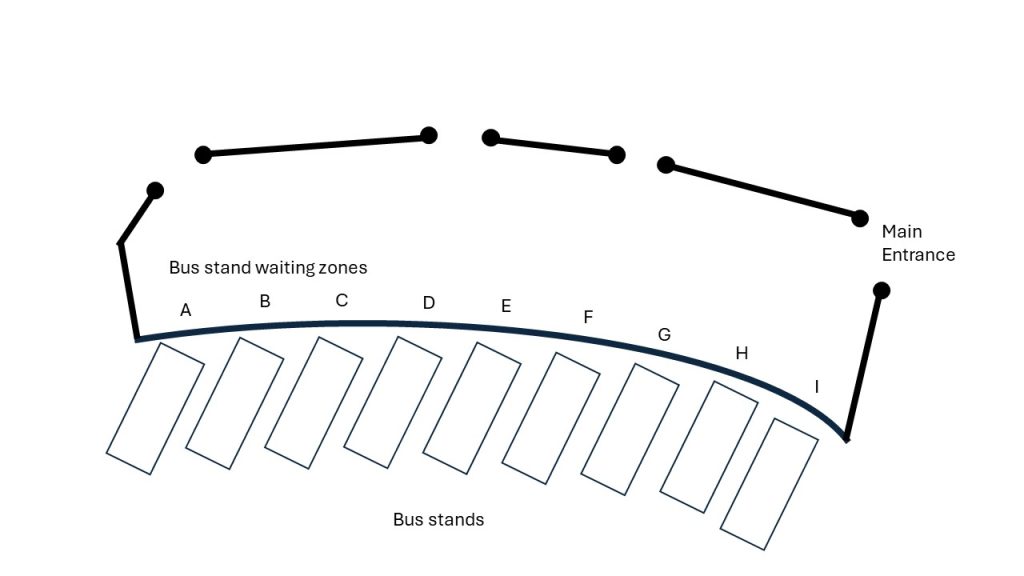
Working on a transit hub wayfinding map at the moment and they have fallen for an old information architecture mistake in physical space and human centred design terms.
When you only work with top-down 2d maps and whiteboards, it is easy for the system-view (the God view) to become the information orientation. However, that then goes wrong when human beings, embodied and moving, enter the actual 3d space.
The alphabetic system for bus stands is lovely in this diagram – running left to right on the map. However, when human beings walk into the actual building (thru the main entrance on the right of the map), then everything is the wrong way round.
The map fails to understand the human perspective on place and the information within it.
This is why using 3d prototypes and VR is so important to design processes.
Perspective Blocks

Perspective blocks are what I use in workshops to make the God View and User View explicit.
They developed from some work in museums on both virtual reality and on accessibility. As professionals, we kept mapping and journey planning from the top down and system oriented viewpoints. However, that is not how actual humans encounter the places and the touchpoints and signs within them. In a building (or a virtual 3D space), there are issues of human embodiment. People have presence, they have physical perspectives and they have perceptions that are helped and hindered by their sensory and mental model capacities.
Using Perspective blocks, it is possible to map different perceptions. What is visible and comprehensible to the system may not be accessible to the person in the place.
God View is an easy trap but there are ways to escape it.